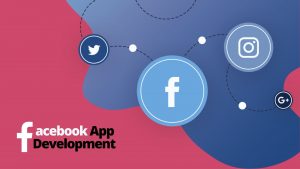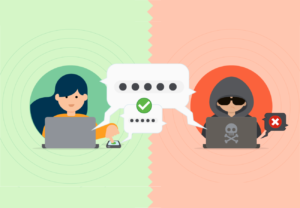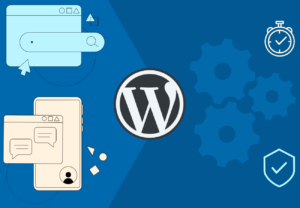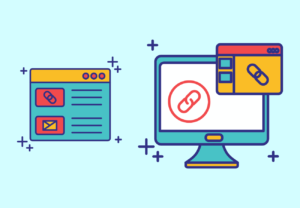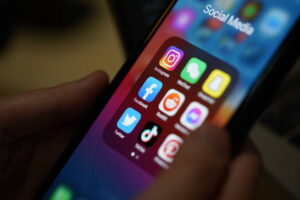Google has followed suit when it comes to IoT by developing its unique Google Brillo OS in that order. Perse, that’s why the Internet of Things (IoT) is drawing the attention of some big names alike. More so, even Qualcomm recently announced its plans to develop smart devices that suit this new technology.
Qualcomm has been around since 1985 and pioneered vital components of the wireless technologies you use today. Fundamentally, the San Diego-based company invents and licenses technologies and designs semiconductor chips. You can learn more about Qualcomm and what it offers in detail.

So, what can we expect from Google Brillo? Well, little is confirmed at this stage. But, some information has been revealed and rumors are flying. In that case, below is a quick review of what we know about the Google Brillo OS.
What Is Google Brillo OS?
Upon its release, Google Brillo OS will be an operating system that is rumored to be launched under its initial Android brand application. The Brillo software is said to be aimed at low-power devices that have as little as 64MB, or potentially even just 32MB of RAM.
With the likes of Apple, Samsung, and Qualcomm already moving to put their companies at the forefront of smart home technology, Google appears to want its own piece of the pie by jumping on the internet of things bandwagon. The Google Brillo OS is a key way in terms of IoT.
In reality, there’s plenty of jargon related to the internet. But, one that has broken into the mainstream as potentially one of the most important terms for the way we live and communicate in the future is the Internet of Things (IoT). And this’s where Android Things comes in handy.
Related: What Is Cloud Computing? A Step-by-step Beginners Guide
In short, the Internet of Things is a term used to describe the linking of everyday objects with the internet. Joined together using technology. And with the goal being to allow people to seamlessly pick up knowledge as they are on the move. Meaning, there’s no need to sit at a computer or even to talk with another human.
One of the most famous early examples of the internet of things being put into practice is wearable technology such as Google Glass. However, it is much more than that as it can extend to your workplace, your home, your car, and more. Don’t forget to read more about the Internet of Things in detail.
Where will Google Brillo OS be used?
With the emergence of new technology arrives various complications. For example, many manufacturers have jumped on the bandwagon at the same time and are releasing smart devices that can be connected to the internet with the idea of receiving and sending data.
Yet, all of these devices will ultimately require a common platform, software, or language. So that they can work together and recognize each other. Among the early adopters of the idea has been Apple. It has developed a framework called HomeKit.
The main aim of HomeKit is to simplify the ideas behind the Internet of Things with home automation. It offers a common language that can be used with a host of smart devices. This then brings us full circle to the idea of the futuristic Google Brillo OS.
Brillo is set to provide these low-powered devices with the ability to communicate with devices that are nearby. It is hoped that the software may eventually be used on everything. From refrigerators to smaller devices such as camera monitors, door sensors, and light bulbs.
When is the release date of Google Brillo?
Actually, Google Brillo may not debut at all: at least, not with this name. Currently, Brillo is simply an internal name being used by Google – when it comes to launching time it may take on a different guise. However, the software IS being developed, with reports suggesting it is being controlled by the Android team.
It’s not yet clear as to when the product will be made available to consumers: but it is expected that we will learn more about Google Brillo when the Google I-O developer conference takes place during the final week of May. So, what else do we know about Google Brillo?
The short answer would be “not a lot”. However, it’s thought that Nest Labs may be involved in some way. More so, after Tony Fadell, the man responsible for Nest but who now works at Google was pictured when the story first broke about Brillo. In other news, Nest was acquired by Google last year.
Related: Microsoft Azure | A Cloud Platform For Modern Businesses
With it being subsequently announced that a developer program taking the name “Works with Nest” would be launched, providing APIs. The idea is that manufacturers are able to attach them to smart devices and integrate them with other Google/Nest products.
As well as enjoying remote control. Google for now though, appears to be keeping the Nest brand separate as there is no link to Android or Google on the Nest website. On the contrary, there’s just so much going on around Android too.
Welcome To Android Things!
Through Google Brillo OS, Android Things lets you experiment with building smart, connected device applications. Meaning, there’s the ease and power of Android-powered devices. With Android Things, you can easily develop apps for your devices with existing Android development tools.
As well as make use of APIs and other developer resource tools along with new APIs. Such APIs provide low-level I/O and libraries for common components too. Like temperature sensors, display controllers, and more. There’s a new Android Things 1.0 release.
Whereby, Android Things 1.0 introduces a variety of new features and capabilities for users and developers. For instance, it allows apps to control and monitor the process of applying over-the-air (OTA) software updates from the Android Things Console.
Likewise, you can use UpdateManager to set the updated policy and configure the reboot behavior of the device following an OTA update. And, as a result, you can manually trigger a device reboot or factory reset with DeviceManager.
How Android Things Work
In particular, Android Things expects one app to expose one “home activity” in its manifest. More so, as the main entry point for the system to automatically launch on boot. For your information, this document highlights what’s new for developers in detail.
On one side, Android 11 brings a host of new features, from people-centric UI to a new controls space and more privacy features. Extend your apps with conversation notifications and bubbles, try one-time permissions, test with new compatibility toggles, and more.
On the other side, Android 12, the next version of Android, sets you up to take advantage of a range of new experiences, from people-centric UI to stronger protections for your users. You can learn more about the latest release of Android in detail.
During development and testing, you can subscribe your test devices to different channels. Such as canary or beta, and deliver separate OTA build to those devices through the Android Things Console. You can also use the setChannel feature to change the channel for a given device.
Bluetooth & Wear OS by Google
Android Things 1.0 enhances the core Android Bluetooth APIs with additional features for device state management. Configure active Bluetooth profiles with BluetoothProfileManager and set the device attributes and capabilities with BluetoothConfigManager.
Additionally, you can use the BluetoothConnectionManager to initiate pairing with a remote device. As you handle incoming pairing requests and control the connection process. See the Bluetooth API Guide for more details.
With Wear OS by Google, you can write apps that help users live more present, healthy, and productive lives. With major improvements to the core experience and big changes to the platform, there’s a lot to be excited about. The next version of Wear is coming! So, stay ahead and learn more about Wear OS in detail.
LoWPAN & CameraX
Connect your devices to IP-based Low-Power Wireless Personal Area Networks (LoWPAN) in Android Things 1.0, including Thread networks. Use the LowpanManager to discover the supported radio interfaces on the device and listen for changes in state.
You can also create new networks and join existing networks through the LowpanInterface too. Or even create a LowpanScanner to discover other networks nearby. See the LoWPAN Guide for more on setting up these networks and getting started with OpenThread supported hardware.
CameraX is a Jetpack support library, built to help you make camera app development easier. It provides a consistent and easy-to-use API surface that works across most Android devices, with backward compatibility to Android 5.0 (API level 21). While CameraX leverages the capabilities of camera2, it uses a simpler approach that is lifecycle-aware and is based on use cases.
It also resolves device compatibility issues for you so that you don’t have to include device-specific code in your codebase. These features reduce the amount of code you need to write when adding camera capabilities to your app. Lastly, CameraX enables developers to leverage the same camera experiences and features that preinstalled camera apps provide.
With as little as two lines of code. CameraX Extensions are optional add-ons that enable you to add effects on supported devices. These effects include Bokeh(Portrait), HDR, Night, and Face Retouch. Learn how to Get started with CameraX in detail.
Android for Cars & TV
Build apps that help users connect on the road through Android Automotive OS and Android Auto. Users who have a vehicle with Android Automotive OS can install your app onto their vehicle’s infotainment system. Android Auto lets users connect their phone (Android 5.0 or higher) to a compatible vehicle to display a driver-optimized version of your app directly on the console.
With Android TV, you’ll build apps that let users experience your app’s immersive content on the big screen. Users can discover your content recommendations on the home screen. Whilst, the leanback library provides APIs to help you build a great user experience for remote control.
Peripherals
The Peripheral I/O APIs allow your apps to communicate with sensors and actuators using industry-standard protocols and interfaces. It supports interfaces like GPIO, PWM, I2C, SPI, UART. Open a connection to any of these interfaces with the or list the available ports using the PeripheralManager.
Apps can also access Native Peripheral I/O from C/C++ code for developers using the Android NDK. In addition, Android Things 1.0 enables apps to extend existing Android framework services and inject hardware events with user-space drivers.
In this release, the key drivers give support to various categories. Including location, input, sensors, LoWPAN. Whereby, you can implement driver code using Peripheral I/O to communicate with your custom hardware. And then, bind that driver to the framework through the UserDriverManager.
Useful Android Developer Resources:
- Chrome OS Devices
- Build a Chrome OS app
- Development Platforms
- Android Developers Blog
- How Android Things Work
- Optimize a Chrome OS app
- Android Things Device Updates
- Unbundling the WindowManager
Lastly, with Android Things 1.0, you can adjust the date/time settings of the device using the TimeManager. This includes control of the clock time and time zone. As well as date/time formats and automatic time syncing with the network.
With this technology, you can also distribute your Android apps to Google Chrome OS Devices too. Such as Chromebooks, through Google Play Store. And now, having said that, you can learn how to get started in detail.
Final Thoughts,
The real question is; will Google Brillo OS have any competitors? Well, according to an analysis by Gartner, the number of devices connected to the Internet of Things are on a surge. Reaching around 26 billion by 2020, up from just 900 million in 2009. As such, it appears that all of the big names in the technology sphere are trying to establish themselves in this new sector.
For example, let’s consider Huawei LiteOS Architecture. Whereby, it’s an operating system that has just 10 KB. And it’s design is for connected machines and appliances. Meanwhile, with the impending launch of Windows 10, Microsoft has developed Windows 10 IoT Core too. To run on wearable devices, ATMs, and ultrasound machines.
Related: Windows 11 | Key Features & What it Means for Developers
And then, there’s also Samsung Artik Hardware that is designed for IoT devices that feature Samsung hardware and open software. So, it seems wherever you turn in the technological sphere, the Internet of Things continues to take great strides. And with Brillo, Google is sure to be among the early pacesetters.
That’s all for now. But, all in all, just in case there’s something more about the Internet of Things (IoT) and Google Brillo OS, we’ll let you know. That said, feel free to let us know in our comments section below if there are more thoughts to consider. You can also Contact Us if you’ll need more support.
